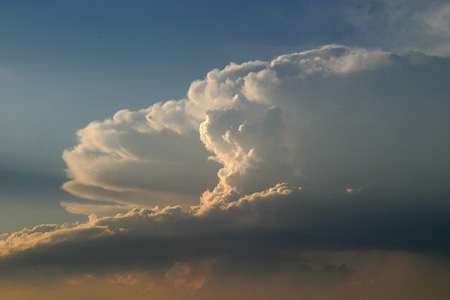Tagging tiny particles in turbulent clouds

(Â鶹ÒùÔº) —Hitching tiny atmospheric particles to cloud formation enables climate models to represent the particles' effects on convective storm systems. Scientists at Pacific Northwest National Laboratory and collaborators at North Carolina State University and Scripps Institution of Oceanography implemented a new modeling approach linking particles and convection in a regional climate model to capture an improved view of turbulent storm clouds. Their approach was verified through investigation of the impacts of these aerosol particles on the East Asian summer monsoon where convective storms are frequent.
"Linking microphysical properties of clouds and aerosols' effects to an existing convective cloud model representation led to more realistic simulations of monsoon precipitation and clouds' influence on Earth's energy balance," said Dr. Kyo-Sun Sunny Lim, PNNL atmospheric scientist and lead author of the study. "This new model capability, which is missing in most climate models, will help us investigate aerosols' effects on turbulent storm clouds and their influence on regional climate."
Why It Matters: Even very large atmospheric turbulence—the kind that creates tall, dark storm clouds that can unleash a downpour—is not resolved in most global and regional climate models. When climate models divide the Earth into grid sizes a computer can tackle, these clouds can be left out of the picture because they are so small.
To represent the full complexity of clouds, scientists use parameterizations, simplified equations to approximate the complexity. Current cumulus parameterizations, used to represent the atmospheric effects of turbulent updrafts of air called convection, do not capture two significant properties well: cloud microphysical processes and how they interact with atmospheric particles called aerosols. This study solved that problem and provides the "missing link" between aerosols and convection that is essential for understanding how pollution affects regional climate.

The research team linked aerosols with cloud droplet nucleation and ice nucleation processes to improve a cumulus parameterization with cloud microphysics. The updated parameterization was implemented in the Weather Research and Forecasting (WRF) model coupled with chemistry (WRF-Chem) and the physics module of the Community Atmosphere Model version 5 (CAM5).
They conducted regional climate simulations over East Asia with the improved cumulus parameterization for July 2008 and compared two sets of simulations with and without microphysics processes to evaluate the impacts. They also performed simulations with polluted and clean conditions to examine how aerosols effect convection and the subsequent changes for the East Asian monsoon climate.
The researchers noted that the cumulus parameterization with and without the cloud microphysics representation has larger effects on the simulated cloud and precipitation than the simulated effects of increasing aerosol concentrations. This finding highlights the importance of addressing limitations in cumulus parameterizations used in climate models for more credible evaluation of aerosol effects.
Researchers will compare the new cumulus parameterization to high-resolution simulations in which these clouds are explicitly resolved for further improvement of the parameterization.
More information: Lim KSS, J Fan, LR Leung, PL Ma, B Singh, C Zhao, Y Zhang, G Zhang and X Song. 2014. "Investigation of Aerosol Indirect Effects using a Cumulus Microphysics Parameterization in a Regional Climate Model." Journal of Geophysical Research: Atmospheres 119(2):906-926.
Journal information: Journal of Geophysical Research
Provided by Pacific Northwest National Laboratory





















